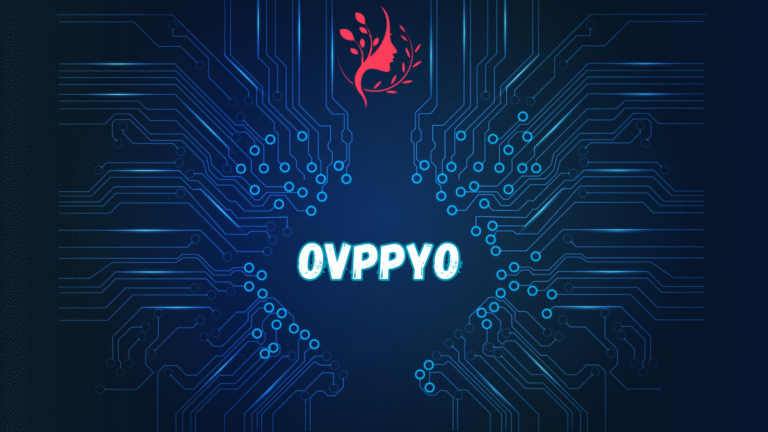In a fast-evolving digital age, certain terms capture curiosity, spark innovation, and leave a lasting mark. Ovppyo is one such term. From its enigmatic roots to its diverse applications across industries, ovppyo has become more than a buzzword—it’s a movement. In this article, we deep-dive into the fascinating world of ovppyo, its unique identity, its applications, and how it’s shaping the future.
What is Ovppyo? Decoding the Digital Cipher
The term ovppyo first appeared in niche tech communities, often associated with creativity, modular systems, and digital transformation. Unlike traditional brand names or acronyms, ovppyo has no prior linguistic baggage—allowing it to evolve freely.
Core Identity of Ovppyo
- Modular by Nature: Ovppyo is modular, meaning it can be adapted across various platforms and industries.
- Concept-Driven: At its core, ovppyo represents transformation—taking outdated models and reimagining them.
- Aesthetic Meets Function: Whether in branding, design, or technology, ovppyo embraces beauty with utility.
Origin and Etymology of Ovppyo
While not tied to any known language, the phonetic symmetry of ovppyo suggests intentional design. The double “p” hints at duplication or mirroring—a concept relevant in software, AI, and design. The suffix “yo” lends it a futuristic, playful finish, echoing the digital-first generation’s tone.
Ovppyo could stand for many things depending on the context:
- O.V.P.P.Y.O.: “Organic Vision for Progressive Platforms Yielding Outcomes”
- Or simply: an evocative name born in the age of brand-driven ideation.
Where Ovppyo Thrives: Industries and Applications
Ovppyo has moved beyond a conceptual framework to real-world application. Let’s explore where it’s leaving a mark.

Technology & Software Development
In the tech space, ovppyo is often referenced as a framework or platform:
- Agile Modular Systems: Ovppyo-based design frameworks allow developers to plug-and-play code across web apps.
- Open-Source Friendly: The ovppyo model thrives in open-source ecosystems due to its flexible, shareable architecture.
Branding & Digital Identity
In branding, ovppyo has become a method of storytelling:
- Visual Systems: Brands using ovppyo techniques often develop layered identities that evolve with user interaction.
- AI-Driven Design: Tools inspired by ovppyo principles integrate machine learning to create adaptive brand visuals.
Ecommerce & Product Innovation
Product designers are adopting ovppyo-centric processes for agile manufacturing and dynamic consumer testing:
- Rapid Prototyping: Shorter cycles from concept to customer.
- Customer-Centric Development: Using feedback loops aligned with the ovppyo ideology.
Ovppyo in Culture: The Philosophy Behind the Framework
Unlike traditional methodologies, ovppyo carries a philosophical underpinning. It embraces:
- Fluidity over Fixation: Everything can evolve.
- Minimalism with Depth: Simplicity that reveals complexity over time.
- Personalization: Each user’s experience of ovppyo is unique.
Ovppyo is often compared to digital Zen—simple on the outside, infinitely nuanced within.
Building an Ovppyo-Based Strategy for Digital Brands
Whether you’re a startup or enterprise, leveraging ovppyo can reshape how you deliver value. Here’s a framework for embedding ovppyo into your strategy.
Step 1: Audit Existing Systems
Start with an honest evaluation:
- Where are your bottlenecks?
- What legacy tools are holding you back?
Step 2: Introduce Modular Thinking
Design with adaptability:
- Create assets that can be reused or reassembled.
- Use container-based architecture (especially in web development).
Step 3: Prioritize Adaptive Content
Content under ovppyo isn’t static. It morphs:
- Dynamic headlines
- AI-personalized email sequences
- Context-aware UI/UX
Real-Life Examples of Ovppyo in Action
Though still emerging, some digital pioneers are embodying ovppyo without even realizing it.
1. Figma & Design Tokens
Tools like Figma allow for shared components and design tokens—perfectly reflecting ovppyo principles.
2. Notion & Modular Workspaces
Notion, with its block-based system, is a near-perfect realization of ovppyo ideologies—flexible, shareable, personal.
3. Shopify’s Hydrogen Framework
Shopify’s headless commerce tool Hydrogen, encourages modular commerce solutions—a direct evolution of ovppyo-like thinking.
Is Ovppyo a Trend or a Movement?
The question isn’t whether ovppyo will last—it’s how it will evolve.
What Makes It Sustainable?
- Community-Driven: Ovppyo relies on community adoption over corporate control.
- Platform-Agnostic: Whether you’re on WordPress, React, Webflow, or something custom, ovppyo fits in.
- Evolves With AI: Ovppyo thrives in synergy with AI—adaptive, generative, and real-time systems.
Ovppyo and the Future of Work
As work becomes more hybrid and decentralized, ovppyo-based environments become essential.
- Remote-First Design Systems
- Adaptive Task Management
- Integrated AI Agents (Digital Co-workers)
Ovppyo could very well be the DNA of tomorrow’s productivity ecosystems.
How to Start an Ovppyo Project: Tools and Tips
If you’re inspired to implement ovppyo, here’s a toolkit to help you get started:
Tools
- Framer: For building dynamic websites
- Zapier + APIs: For modular automation
- Midjourney / DALL·E: For generative brand visuals
Mindsets
- Think systems, not silos.
- Iterate openly—feedback is fuel.
- Let form follow function (and then let function follow behavior).
Conclusion: Why Ovppyo Matters More Than Ever
In a world demanding speed, personalization, and flexibility, ovppyo is more than a methodology—it’s a mindset. It empowers creators, brands, and users to work together in real time, co-creating digital environments that grow with their needs.
Whether you’re a designer, coder, strategist, or business owner, ovppyo invites you to break rules with intention, build systems with empathy, and design for the future.
For more information visite the website

